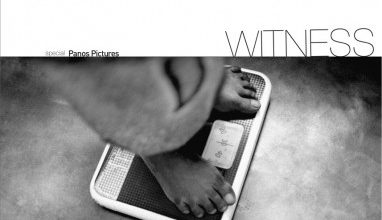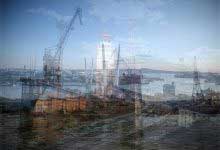
PRIVATE 25 | SAINT PETERSBURG – The Inner City
concept by Asya Nemchenok; redazione testi Sergio Rotino; introduction by Sergey Nosov
Introduction
It’s strange: I have lived my whole life in St. Petersburg, I write about St. Petersburg, but when I dream, nothing of the city appears, no palaces, no domes, no wide squares or statues in the gardens, no stone lions or bronze horses, no dark stairways in old rented houses or shafts of light in courtyards, none of the hundred or so bridges, nothing at all. I asked my relatives if the city had appeared in their dreams. It never had for my octogenarian father or my seventeen-year-old daughter. But something had once appeared to my wife: it was as if she were sailing the canal on a motor boat looking upwards at the façades of the houses – the windows, the columns, the balconies with their caryatids… But my wife is a guide and interpreter so this was more like dreaming about her job than a dream about St. Petersburg. What’s the problem? Is it that a dream about what some claim to be the most fantastic city in the world is something totally exotic, special, a kind of dream within a dream?
Does this great city still exist, the city whose foundation date was know so precisely? St. Petersburg was founded and built by order of tzar Peter the Great: here and now. The delta of the river Neva, the islands, the woods and the marshes; in a word, its harsh damp climate. And worse, the dreadful floods no one even suspected would be a regular event. It was one thing to build a military fortress to gain a maritime exist, any garrison could while away the time there… But the empire’s capital! The capital which does not surrender to the capitals of all other empires! Not even its own, Moscow?!
St. Petersburg came from a surplus of strength and imperial imagination. It is a utopia constructed. By common sense, St. Petersburg should not exist. The omen “that place will be empty” came from common sense. Anyone saying that then would have lost their tongue: myths are afraid of the laws of reality.
In any case, the city is this incredible homuncule, an invention, “a mental game”, the premeditated city, the city-project. You can only imagine the enthusiasm of the Italian architects invited to build palaces and cathedrals in the “empty place”. St. Petersburg opened up to Europe and opened Europe. It greedily swallowed everything that was European and digested it. And not just what was European.
I can imagine myself as the marquis De Custine. A hundred and seventy years ago, that learned foreigner visiting Petersburg could not begin to imagine that the grandiose sphinxes on the Neva were authentic. Yet it’s difficult to say what is more fantastic: what he thinks about this Russian project – sculpting you know not why to make sphinxes imitating the Egyptians? Or an extraordinary diplomatic intrigue which actually took place and ended in the granite sphinxes of the pharaoh Amen Hotep being handed to us, here (who knows why) under the cloudy St. Petersburg sky? And the recent gift from the French? They are erecting “The tower of peace” in Sennaja square to mark the three hundredth anniversary of the city. That pile of ironclad glass eighteen metres high rises in the place where Dostoevskij’s Rodion Raskolnikov, deeply penitent, kissed “that dirty soil” without thinking of the consequences.
Who’s fault is it if you can’t go anywhere in St. Petersburg without it having a “meaning”?
It’s strange living in this city, but only for guests. St. Petersburg residents are used to strange things and take no notice. Amongst them, only those for whom strange things are a must take notice: painters and photographers for example.
It’s a shame I am not a photographer. St. Petersburg makes you want to be a photographer. St. Petersburg summons forth creation.
St. Petersburg makes you want to be decadent. Or modernist or post-modern; realist or hyper-realist: whatever you like.
St. Petersburg simply makes you want to be.
By (Sergey Nosov)








